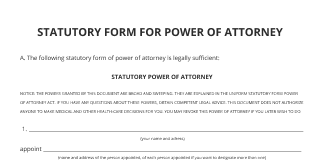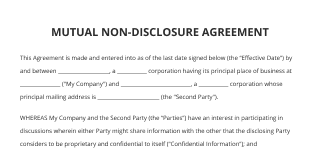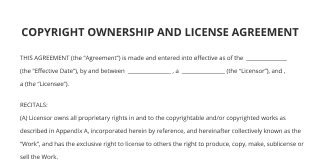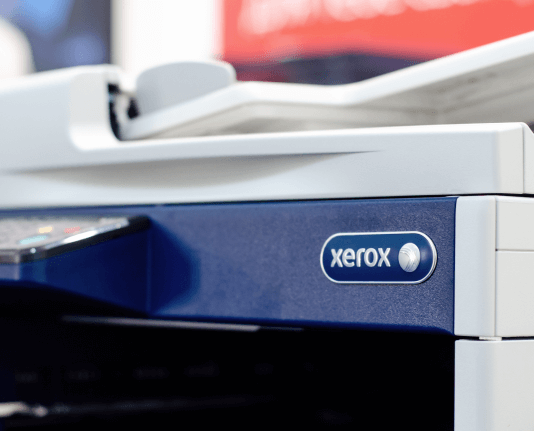Is an Invoice and Receipt the Same Thing for Your Business Needs
Move your business forward with the airSlate SignNow eSignature solution
Add your legally binding signature
Integrate via API
Send conditional documents
Share documents via an invite link
Save time with reusable templates
Improve team collaboration
See airSlate SignNow eSignatures in action
Understanding the Differences Between Invoices and Receipts
An invoice and a receipt serve different purposes in the realm of financial transactions. An invoice is a document issued by a seller to a buyer, detailing the products or services provided, along with the amount due for payment. It acts as a request for payment and typically includes terms such as payment due dates and penalties for late payment. In contrast, a receipt is proof of payment. It is issued after the payment has been made and confirms that the buyer has fulfilled their financial obligation. Receipts usually contain details such as the date of the transaction, the amount paid, and a description of the goods or services purchased.
When to Use Invoices and Receipts
Knowing when to use invoices and receipts is crucial for effective financial management. Use invoices when you are requesting payment for goods or services rendered. This is common in business-to-business transactions or when providing services that may not be paid for immediately. On the other hand, issue a receipt once payment has been received. This is important for both parties, as it serves as a record of the transaction and can be used for accounting and tax purposes. Businesses should maintain clear records of both invoices and receipts to ensure accurate financial tracking.
Legal Implications of Invoices and Receipts
In the United States, both invoices and receipts have legal significance. An invoice can serve as a legal document that outlines the terms of a sale and can be used in court to enforce payment. It is essential for businesses to ensure that invoices are clear and accurate to avoid disputes. Receipts, on the other hand, are critical for record-keeping and tax reporting. They provide proof that a transaction occurred and can be required for audits. Understanding the legal implications of these documents helps businesses protect their interests and comply with regulations.
Best Practices for Creating Invoices and Receipts
Creating effective invoices and receipts involves following best practices to ensure clarity and professionalism. For invoices, include your business name, contact information, invoice number, date, and a detailed list of services or products provided, along with the total amount due. For receipts, ensure they contain the date of the transaction, the amount paid, and a description of the items purchased. Using digital tools can streamline this process. For instance, airSlate SignNow allows users to create, send, and manage invoices and receipts efficiently, ensuring all necessary information is included and easily accessible.
Common Misconceptions About Invoices and Receipts
Many people mistakenly believe that invoices and receipts are interchangeable. While they are related, understanding their distinct roles is essential for proper financial management. An invoice is a request for payment, while a receipt confirms that payment has been made. This distinction is crucial for businesses to maintain accurate records and manage cash flow effectively. Clarifying these differences can help prevent confusion and ensure that both parties understand their financial obligations.
airSlate SignNow solutions for better efficiency
Our user reviews speak for themselves






Why choose airSlate SignNow
-
Free 7-day trial. Choose the plan you need and try it risk-free.
-
Honest pricing for full-featured plans. airSlate SignNow offers subscription plans with no overages or hidden fees at renewal.
-
Enterprise-grade security. airSlate SignNow helps you comply with global security standards.

Are an invoice and a receipt identical?
Grasping whether an invoice and a receipt are identical is vital for proficient financial management. Although both documents play signNow roles in transactions, they possess unique purposes. In this guide, we will examine how to leverage airSlate SignNow to enhance your document signing workflow, ensuring transparency in your financial interactions.
Are an invoice and a receipt identical?
- Launch your web browser and head to the airSlate SignNow homepage.
- Register for a free trial account or log in to your current account.
- Choose the document you intend to sign or send for signatures and upload it.
- If you anticipate using this document again, save it as a template for subsequent use.
- Access your uploaded document to make necessary modifications, such as adding fillable fields or inserting specific details.
- Sign the document and assign signature fields for the involved recipients.
- Click 'Continue' to set up and dispatch an eSignature invitation to the appropriate parties.
airSlate SignNow provides numerous advantages, including a substantial return on investment due to its wide range of features relative to cost. It is structured to be intuitive and scalable, making it perfect for small to medium-sized enterprises. Additionally, the platform features clear pricing without hidden charges, ensuring you understand exactly what you are paying for.
With outstanding 24/7 support available for all paid plans, airSlate SignNow enables businesses to effectively handle their document signing requirements. Initiate your free trial today and witness the advantages firsthand!
How it works
airSlate SignNow features that users love
Get legally-binding signatures now!
FAQs
-
Is an invoice counted as a receipt?
Businesses should not use invoices and receipts interchangeably. You should use invoices to inform a customer that a payment is due and receipts as proof of payment. -
Can an invoice serve as a receipt?
Receipts, however, should be issued any time a payment is received from the customer. If you're accepting a payment that is made immediately upon providing the goods or services, you don't need to issue an invoice, but can offer a receipt as proof of payment. This is both for the customer's benefit, and your own. -
Can I use a receipt instead of an invoice?
If there's ever confusion about what was billed or paid, having both an invoice and a receipt makes it easier to clarify that. The invoice spells out the agreement, while the receipt confirms what was paid.
What active users are saying — is an invoice and receipt the same thing
Related searches to Is an invoice and receipt the same thing for your business needs
Get more for is an invoice and receipt the same thing
Find out other is an invoice and receipt the same thing
- Unlock Electronic Signature Legitimacy for Applications ...
- Unlock Electronic Signature Legitimacy for Applications ...
- Electronic Signature Legitimacy for Applications in ...
- Enhance Electronic Signature Legitimacy for ...
- Enhance Your Document Workflow with Electronic ...
- Boost Electronic Signature Legitimacy for Agreements in ...
- Unlock the power of electronic signature legitimacy for ...
- Unlock Electronic Signature Legitimacy for Agreements ...
- Unlock Electronic Signature Legitimacy for Agreements ...
- Unlocking Electronic Signature Legitimacy for ...
- Maximize Electronic Signature Legitimacy for Agreements ...
- Unlock Electronic Signature Legitimacy for Agreements ...
- Unlock Electronic Signature Legitimacy for Agreements ...
- Unlock Electronic Signature Legitimacy for Documents in ...
- Unlock Electronic Signature Legitimacy for Documents in ...
- Unlocking Electronic Signature Legitimacy for Documents ...
- Enhance Electronic Signature Legitimacy for Documents ...
- Unlock Electronic Signature Legitimacy for Documents in ...
- Electronic Signature Legitimacy for Documents in India: ...
- Boosting Electronic Signature Legitimacy for Documents ...






























